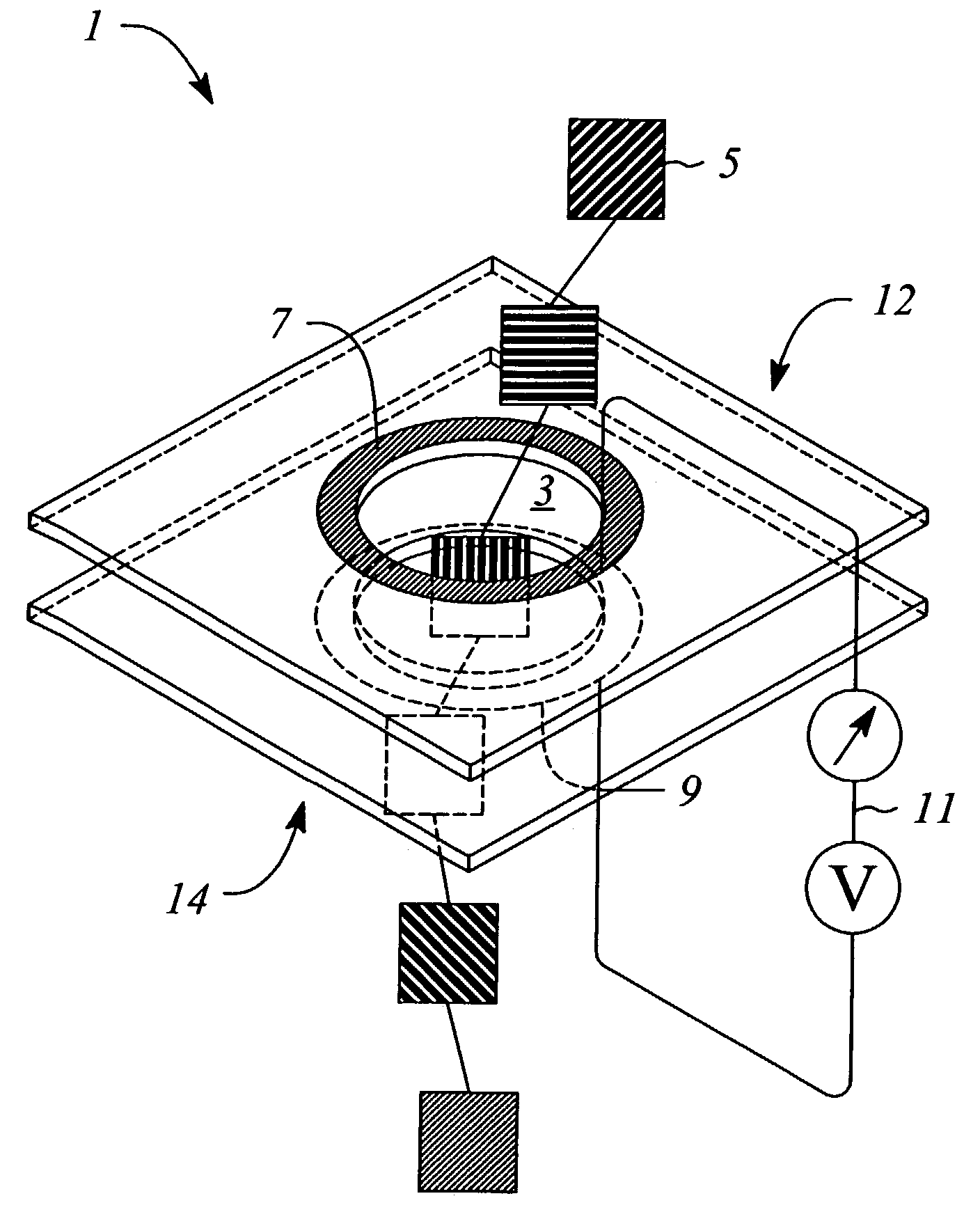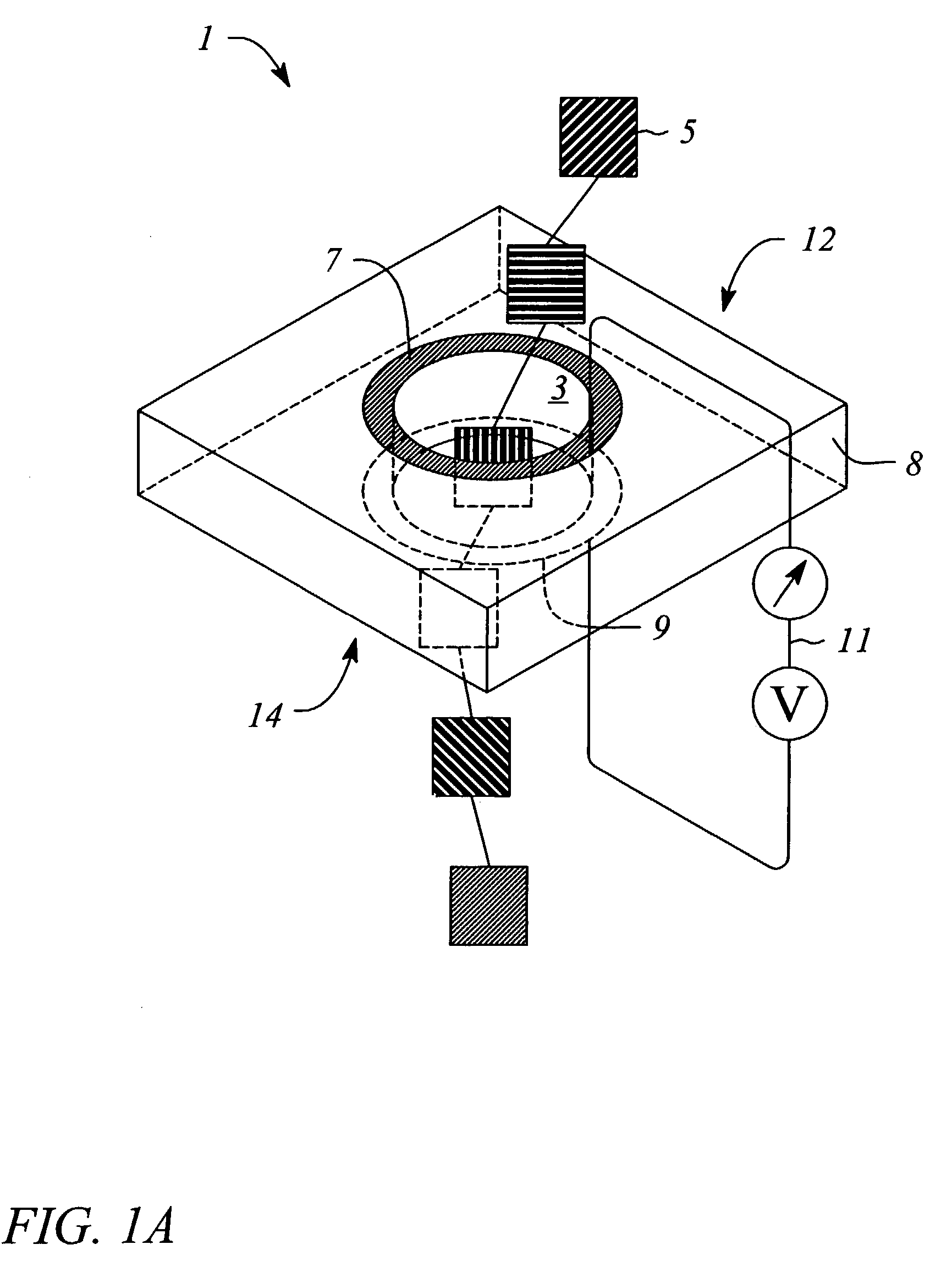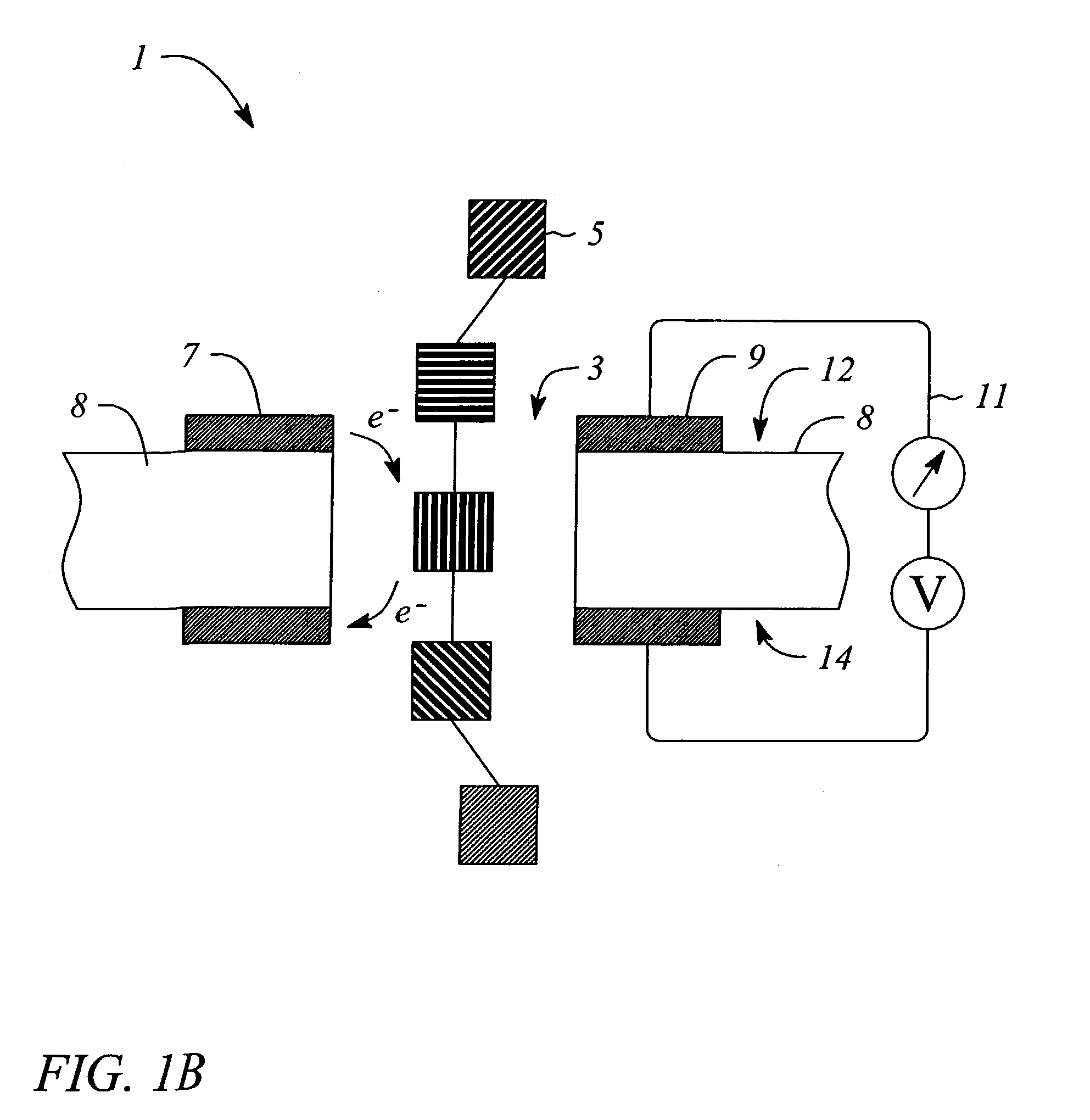Apparatus and method for biopolymer identification during translocation through a nanopore
a technology of biopolymer and nanopore, applied in the field of biopolymers, can solve the problems of long time for effective, large amount of genomic dna in a patient would require an inordinate amount of time and work, and difficult manufacturing, and achieve the effect of improving the identification and sequencing of biopolymers
- Summary
- Abstract
- Description
- Claims
- Application Information
AI Technical Summary
Benefits of technology
Problems solved by technology
Method used
Image
Examples
example 1
[0061]The device can be fabricated using various techniques and materials. The nanopore can be made in a thin (500 nM) freestanding silicon nitride (SiN3) membrane supported on a silicon frame. Using a Focused Ion Beam (FIB) machine, a single initial pore of roughly 500 nM diameter can be created in the membrane. Then, illumination of the pore region with a beam of 3 KeV Argon ions sputters material and slowly closes the hole to the desired dimension of roughly 2 nM in diameter (See Li et al., “Ion beam sculpting at nanometer length scales”, Nature, 412: 166-169, 2001). Metal electrodes are formed by evaporation or other deposition means on the opposing surfaces of the SiN3 membrane. Wire bonding to the metal electrodes allows connection to the tunneling current bias and detection system. The bias is applied using an AC source with the modest requirement of roughly 3-5 volts at 30-50 MHz. The tunneling currents are expected to be in the nanoamp range, and can be measured using a com...
PUM
| Property | Measurement | Unit |
|---|---|---|
| size | aaaaa | aaaaa |
| size | aaaaa | aaaaa |
| tunneling voltage frequency | aaaaa | aaaaa |
Abstract
Description
Claims
Application Information
 Login to View More
Login to View More - R&D
- Intellectual Property
- Life Sciences
- Materials
- Tech Scout
- Unparalleled Data Quality
- Higher Quality Content
- 60% Fewer Hallucinations
Browse by: Latest US Patents, China's latest patents, Technical Efficacy Thesaurus, Application Domain, Technology Topic, Popular Technical Reports.
© 2025 PatSnap. All rights reserved.Legal|Privacy policy|Modern Slavery Act Transparency Statement|Sitemap|About US| Contact US: help@patsnap.com



